Report from Oaxaca, Mexico
Early on a February morning, before our Casa de los Sabores cooking class in Oaxaca, Mexico, we accompanied the chef/teacher Pilar Cabrera to the local market to buy ingredients. Piled high in the stands before us, were small green and purple tomatillos, sacks of fresh and dried chiles (especially Chile Chilhuacle negro, used in the area’s chichilo mole and mole negro), juicy green limons (typically key lime fruit),and an extraordinary variety of herbs, many of them local, like Pitiona a kind of wild sage.
Just before we left the market, Cabrera stopped to buy corn masa from a woman who was kneading the dough. It is made from dried corn that has been soaked in a solution of calcium, rinsed, and then stone-ground and mixed with water until a paste forms. The corn is ground by a molino who is located near the market.
The menu for the day was for Los Tamales and Cabrera had her eight student chefs prepare Ensalada De Tomate Criollo, Jicama Y Nopalitos, a delicious salad made from nopal cactus, purslane leaves, grated jicama, tomatoes, ground chile piquin and lime juice, followed by Tamales De Flores De Calabaza En Totomoxtle (squash blossoms stuffed with corn masa and chopped chepil leaves steamed in dried corn husks), and Tamales De Mole Negro En Joja De Platano (chicken garlic and onion stuffed corn masa tamales steamed in fresh banana leaves). All delicate and delicious.
Corn, it was hard to escape during my one week visit to Oaxaca. In the markets, in the cooking class, in the Jardin Etnobotanico de Oaxaca, and in a temporary poster exhibit, Carteles for La Soberania Alimentaria at IAGO, the Instituto de Artes Graficas de Oaxaca, the library and graphic arts collection founded by artist Francisco Toledo.
During an excellent tour of the ethno-botanic garden, adjacent to the Monastery of Santo Domingo, Dr. Alejandro de Avila Blomberg, director of the garden, paused by an indigenous maize plant, explaining that in the wild corn plants had no ears or cobs. Each seed was encased in a hard shell. Only after years of breeding and selection by the local population did wild maize, a plant that is believed to be 6,000 or 7,000 years old, become transformed into corn, a plant yielding two or three ears with 400 seeds, kernels in each ear.
The garden is intended as a place for education since Oaxaca is one of the most diverse areas in the world. “There are more rock types here and there is greater diversity of the eco systems, with a huge variety in the types of vegetables, plants, animals, and mushrooms,” Blomberg said. Squash seeds, over 10,000 years old (believed to be the earliest cultivation in the entire western hemisphere) have been found in the Guilá Naquitz Cave in Oaxaca, a site where several food crops including teosinte, an ancestor of maize, were also cultivated.
Blomberg is passionate about maize. “Maize is not just food but it is also used in bio fuel, textile fibers, cosmetics, medicines, and cleaning fluids.” Just recently, Blomberg added, with a hint of a smile, he heard of a “biodegradable cellphone made out of maize.”
This year, Blomberg served as one of three jurors in IAGO’s biennial poster competition on Transgenic Corn, Carteles for La Soberania Alimentaria: Mexico Que pasa con neutron maiz? According to Inari Resendiz, director at IAGO, some 641 posters were received from around the world. The exhibit will be on view until mid-March
The theme, Resendiz said, was an important one to Oaxacans. “Oaxaca is one of the richest places in corn diversity,” she said. “We don’t need more diversity through transgenic corn.” To date, there has been lots of action and several conferences on the subject, many under the auspices of UCCS, the Union de Cientificos Comprometidos con la Sociedad.
Two years ago, IAGO sponsored another poster competition focusing on the 43 Mexican students who disappeared in 2014. The subject stirred artists from all over the world, with over 1000 of them submitting poster designs.
Reflecting on current global politics and the wall that President Donald Trump wants to build along the US-Mexican border, Resendiz added: “There’s already talk of our next theme, immigration.”
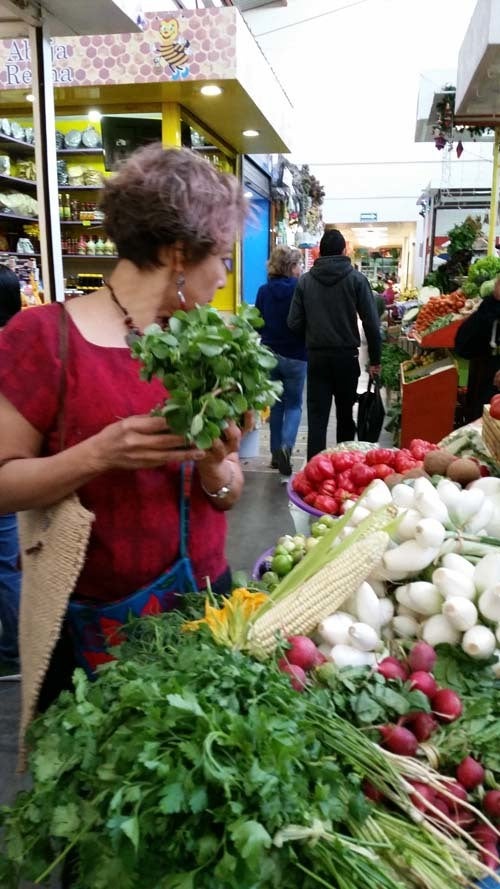
Pilar Cabrera Shopping in local Oaxaca Market
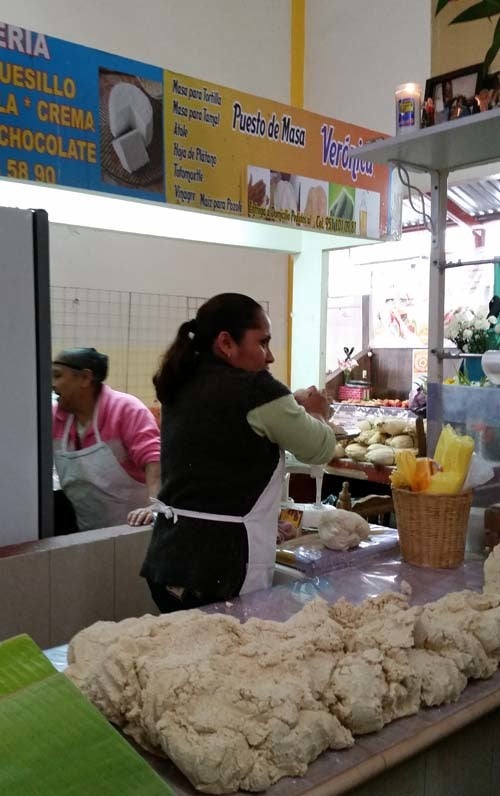
Masa Vendor

Pilar Cabrera Cooking (in her home kitchen)

The Meal: Los Tamales
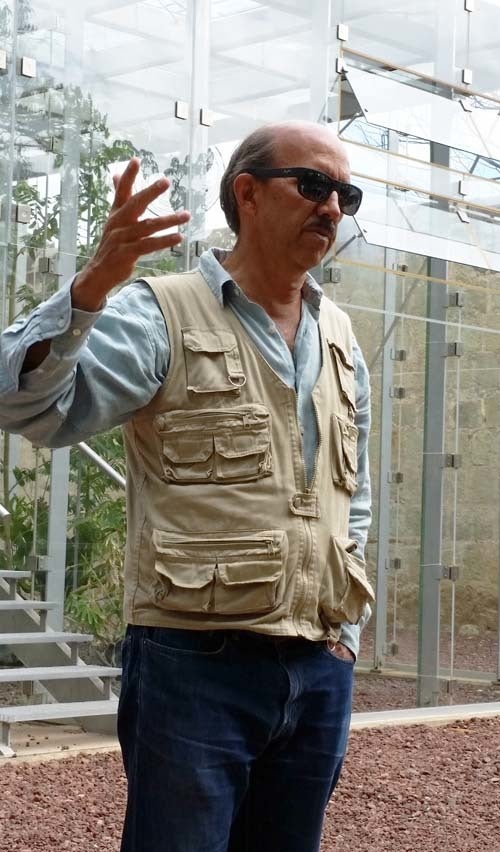
Dr. Alejandro de Avila Blomberg in the Jardin Etnobotanico de Oaxaca
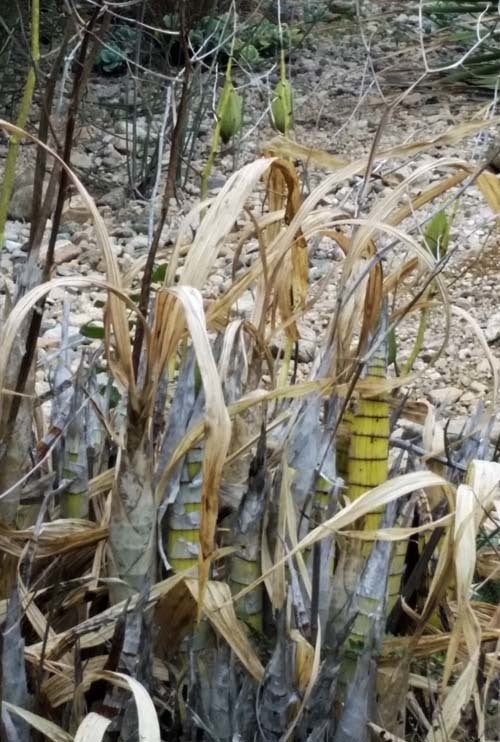
Maize in the Jardin Etnobotanico de Oaxaca
it
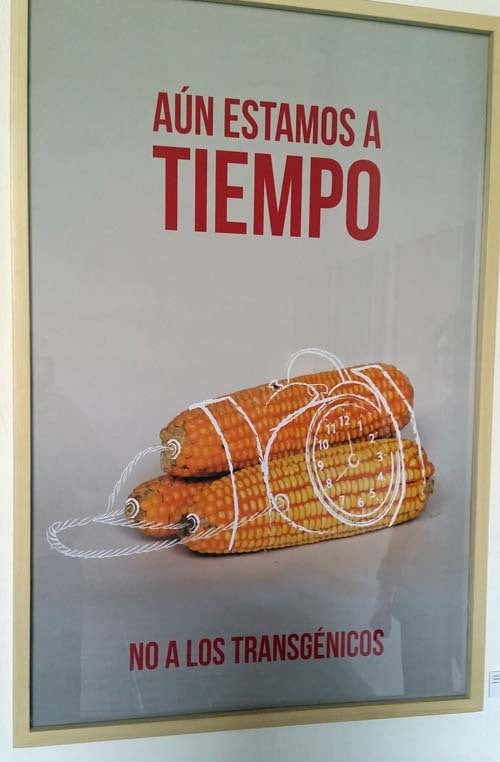
Corn Bomb Poster in IAGO’s carteles exhibition.
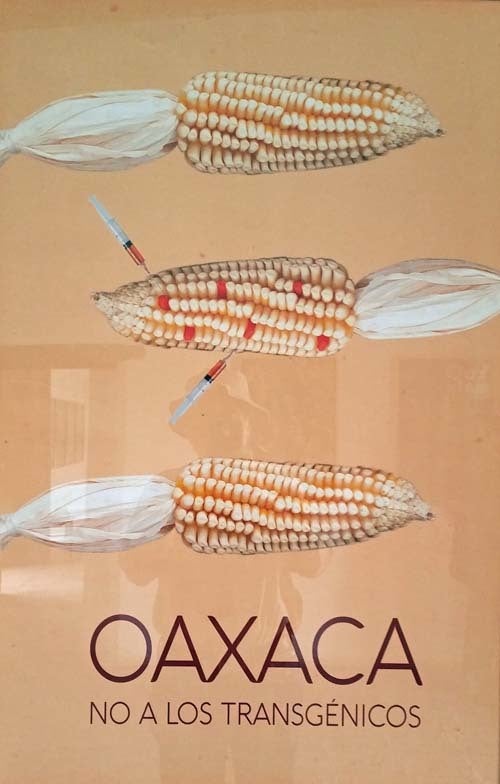
Poster in IAGO carteles exhibition
